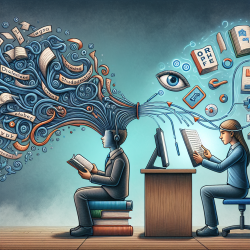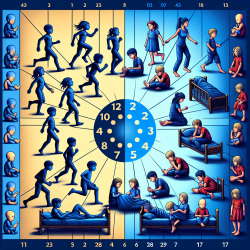As educators and therapists, we continuously strive to enhance the reading abilities of our students, especially those facing challenges like developmental dyslexia. A recent study, "Improving sentence reading performance in Chinese children with developmental dyslexia by training based on visual attention span," sheds light on an effective intervention method that could significantly improve reading skills in dyslexic children. Let's explore how we can incorporate these findings into our practice to help our students thrive.
Understanding Visual Attention Span (VAS)
The study focuses on the concept of Visual Attention Span (VAS), which refers to the number of visual elements one can process simultaneously. Dyslexic individuals often have a reduced VAS, which hampers their reading performance. The research highlights that targeted VAS training can lead to improvements in both VAS capacity and reading skills.
Key Findings from the Study
- VAS-Based Training: The study involved training dyslexic children using tasks that enhance both bottom-up attention (visual short-term memory) and top-down attention (controlled attention and eye-movement control).
- Improvement in Reading Accuracy: Dyslexic children with VAS deficits showed significant improvements in silent sentence reading accuracy after undergoing VAS training.
- Sustained Benefits: The improvements in VAS skills and reading accuracy were sustained even three months after the training, indicating long-term benefits.
Implementing VAS Training in Practice
To apply these findings, consider incorporating the following VAS-based exercises into your therapy sessions:
- Length Estimation Tasks: Use visual arrays where students estimate the number of elements, enhancing their visual short-term memory.
- Visual Search Tasks: Develop activities where students search for specific items among distractors, improving their controlled attention.
- Digit Cancelling Tasks: Create exercises where students cancel out specific digits in a matrix, training their top-down attentional control.
- Eye-Movement Control Tasks: Include puzzles that require tracking visual elements, aiding in better eye-movement coordination.
Encouraging Further Research
While this study provides valuable insights, it's essential to continue exploring and validating these methods across different languages and educational settings. Encourage collaboration with fellow educators and researchers to share findings and develop comprehensive intervention strategies.
Conclusion
By integrating VAS-based training into our therapy sessions, we can make a significant difference in the reading abilities of dyslexic students. These exercises not only improve their VAS skills but also translate to better reading performance, helping them achieve academic success.
To read the original research paper, please follow this link: Improving sentence reading performance in Chinese children with developmental dyslexia by training based on visual attention span.










